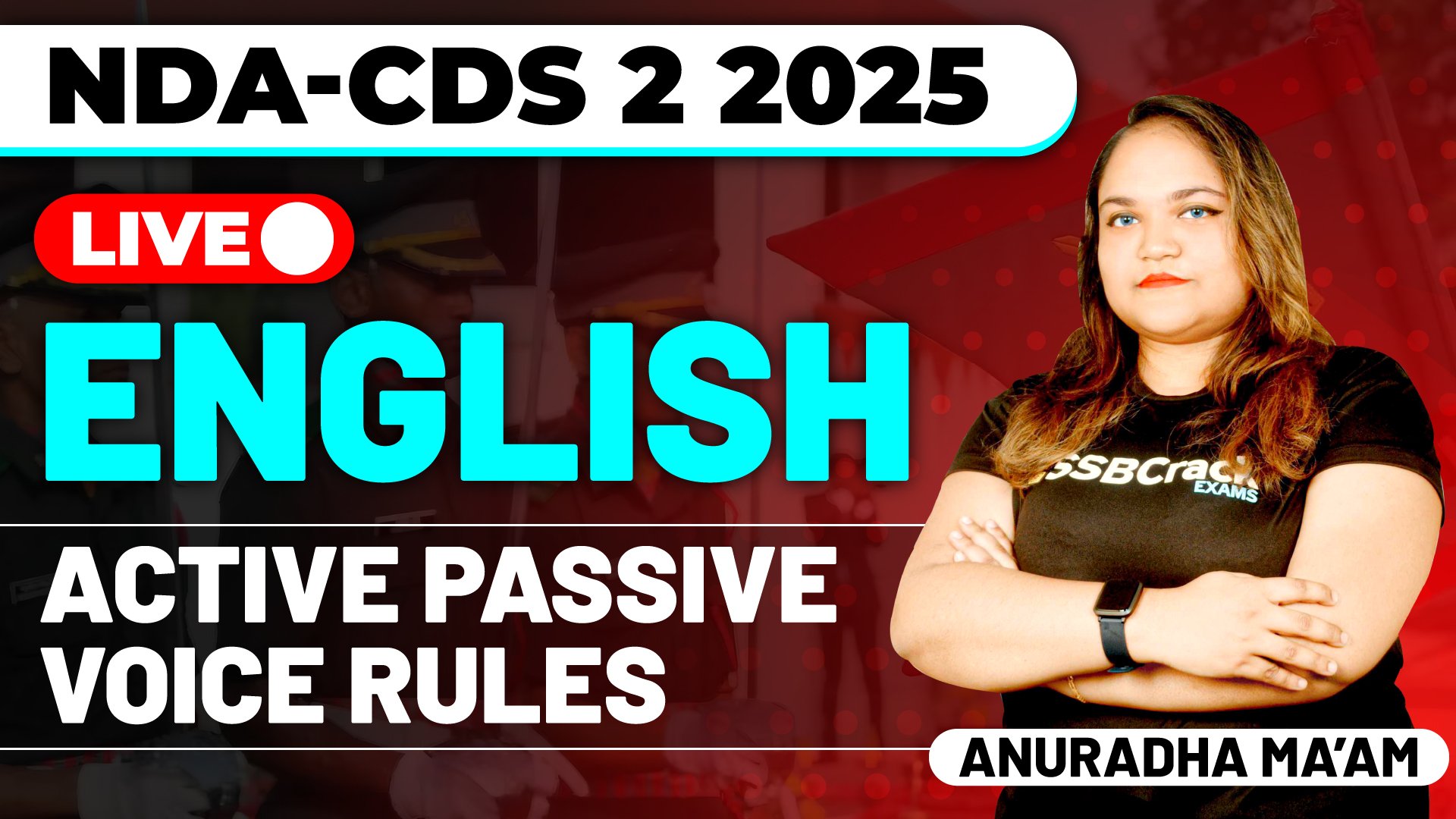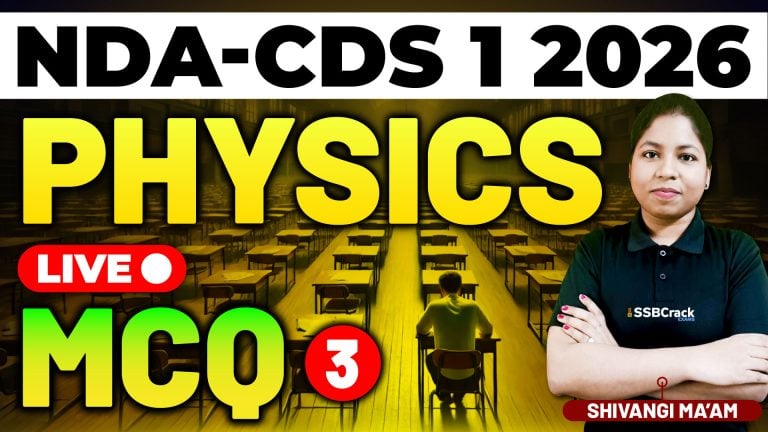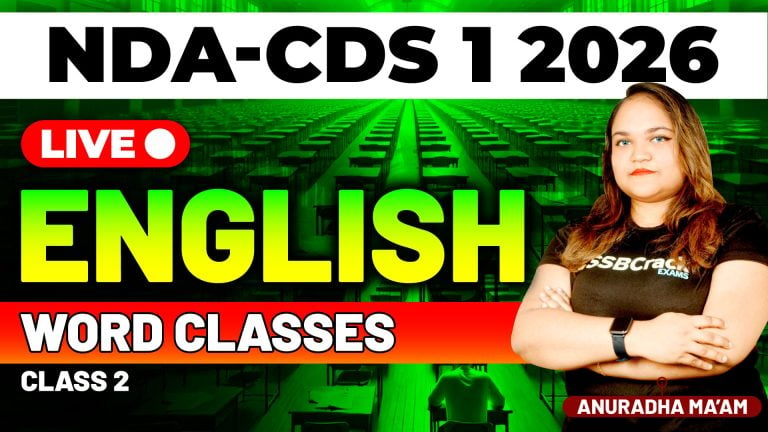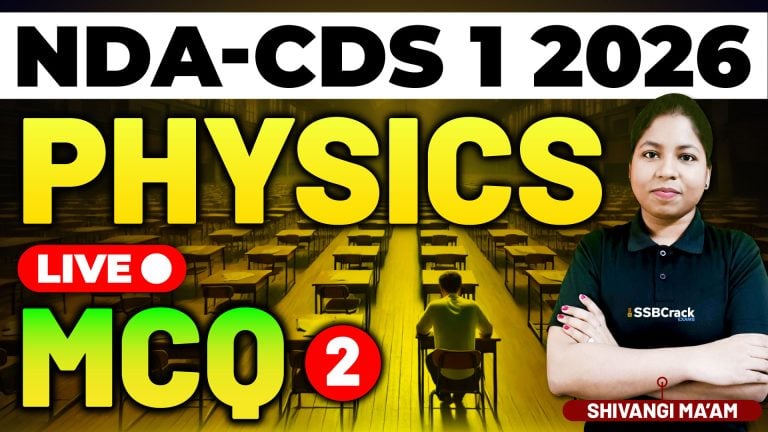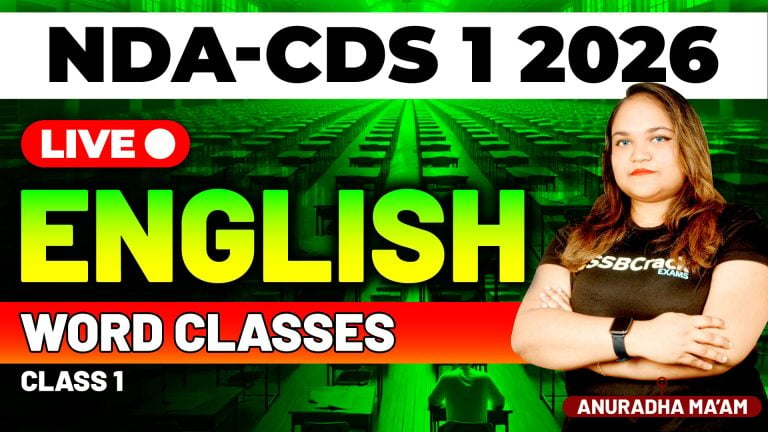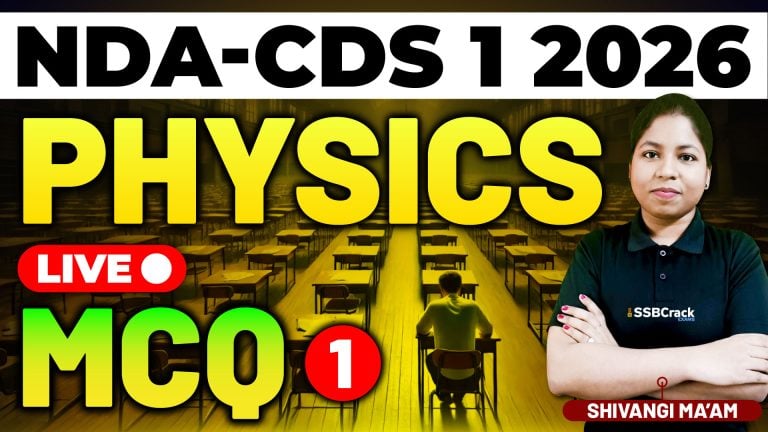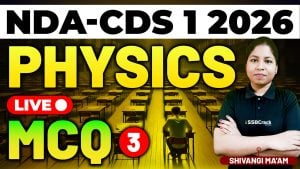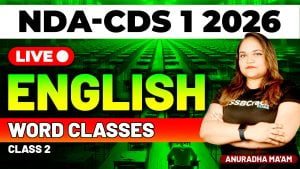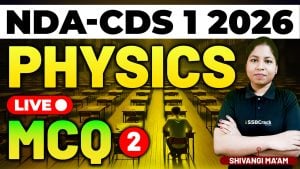Among the grammar topics that frequently appear in the English section of NDA & CDS 2 2025, Active-Passive Voice remains one of the most rule-driven, logic-based, and highly scorable areas. It checks a candidate’s understanding of sentence construction, verb handling, and subject-object transformation — skills essential for both academic success and formal military communication.
In the Active-Passive Voice live concept class, candidates were introduced to the core grammatical rules and structural formats of voice conversion. Special focus was laid on how to transform assertive, imperative, and interrogative sentences from the active to the passive voice using the correct helping verbs, verb forms, and object handling. The class aimed to ensure a conceptual foundation as well as exam readiness.
What Is Voice in Grammar?
- Voice refers to the form of a verb that shows whether the subject performs the action (active voice) or receives the action (passive voice).
- Active: The officer gave orders.
- Passive: Orders were given by the officer.
Changing the voice of a sentence requires complete understanding of:
- Subject-object switching
- Verb tense transformation
- Correct usage of “be” forms + past participles
- Maintaining sentence meaning
Key Concepts Taught in the Live Class
During the session, the focus was on building clarity of structure and application through examples across various sentence types:
1. Assertive Sentences (Statements)
Structure:
- Active: Subject + Verb + Object
- Passive: Object + Helping Verb (be form) + Past Participle + (by + Subject)
Example:
Active: She writes a letter.
Passive: A letter is written by her.
2. Imperative Sentences (Commands/Requests/Suggestions)
Structure:
- Passive: Let + Object + be + Past Participle
- Or: You are requested/advised/ordered + to + base verb
Example:
Active: Close the door.
Passive: Let the door be closed.
OR
You are requested to close the door.
3. Interrogative Sentences (Questions)
Structure:
- Yes/No Questions:
Active: Do you know the answer?
Passive: Is the answer known by you? - WH-Questions:
Active: Who wrote this book?
Passive: By whom was this book written?
The session clarified how to begin passive questions with appropriate auxiliary verbs or question words, while adjusting verb tense and voice correctly.
Common Mistakes Addressed in Class
| Mistake Type | Correction Shared in Class |
|---|---|
| Forgetting to change the verb tense | Emphasized revising tense chart with “be” forms |
| Keeping the subject in the same place | Taught to switch subject and object properly |
| Using incorrect passive structure | Explained formula-based structures for each sentence type |
| Retaining original verb form | Reinforced use of past participle in passive |
| Confusing imperative with assertive | Explained identification clues and passive starters like “Let…” |
Tips Shared for Voice Mastery
- Memorize “be” verb forms for all tenses
- Identify object and subject clearly before conversion
- Always use past participle in the passive voice
- Practice imperative and interrogative transformations regularly
- Avoid unnecessary additions; stay true to the original meaning
Conclusion
The Active-Passive Voice Live Concept Class offered NDA & CDS 2 2025 aspirants a complete understanding of one of the most grammatically structured and exam-relevant topics in the English section. With clear rules, logical steps, and practical exercises, the session helped candidates build the competence to approach voice-based questions confidently and correctly.
Voice transformation is not just a grammar tool — it trains candidates to think clearly, organize sentence structure, and express information precisely — all of which are hallmarks of a future armed forces officer.
